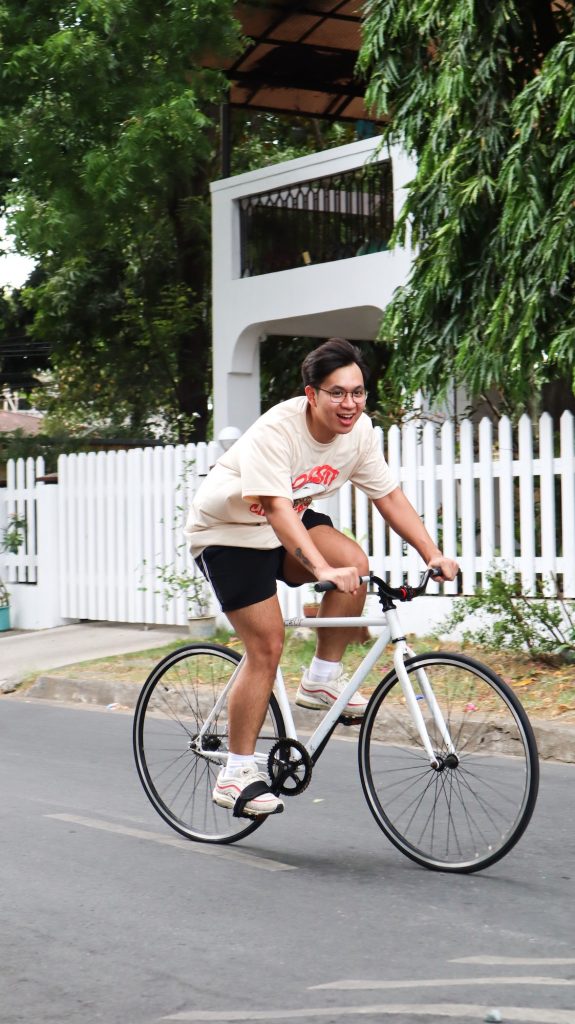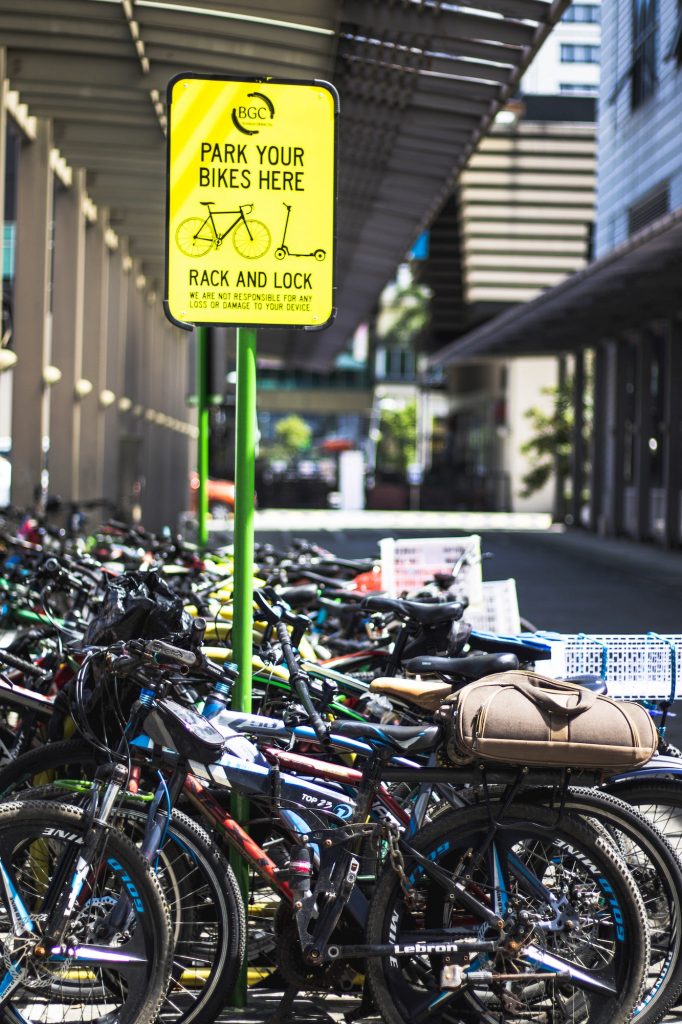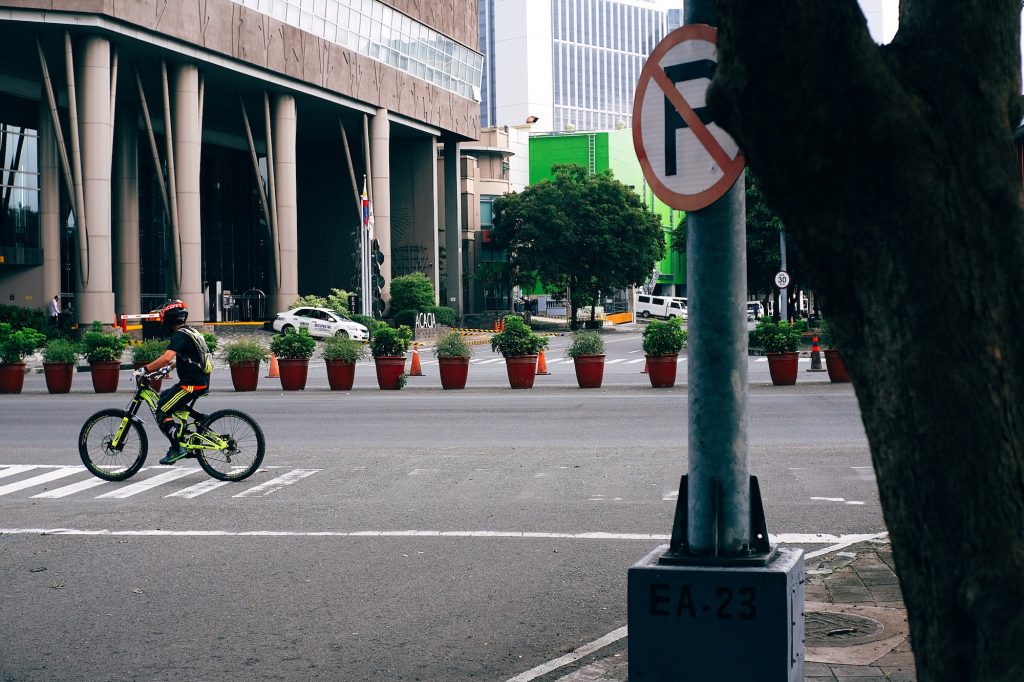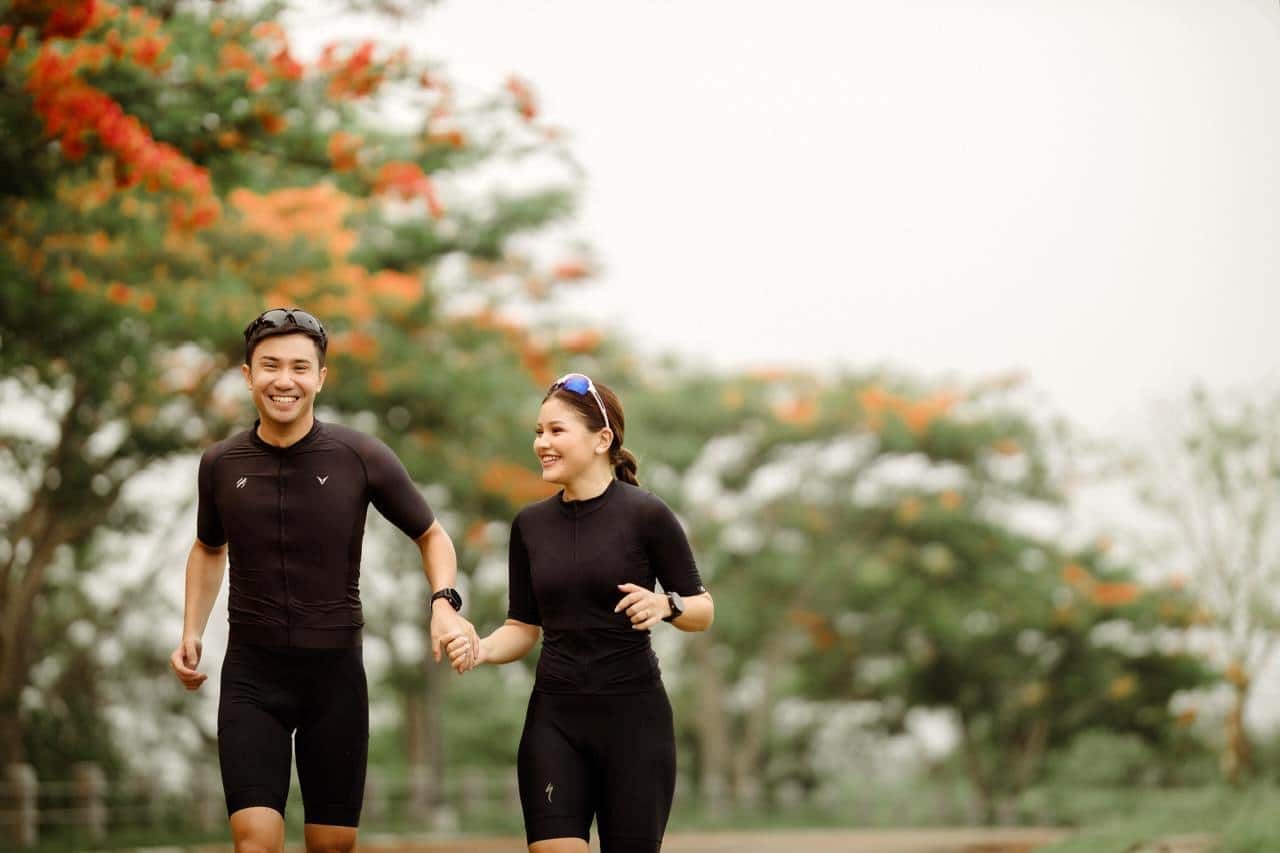Attention to detail and road-tested designs are necessary to scale bike ridership in Manila but cultivating a cycling culture isn’t limited to physical infrastructure
Photos by Jilson Tiu, Four C, Karl Abuid, and Richard Cabusao/Unsplash
The global COVID-19 pandemic has led to massive cultural and societal shifts. And one of the most important issues that have resurfaced since social distancing reared its mask-covered head is rethinking mobility in the grid-locked capital of the Philippines.
While sustainable transport options—electric vehicles, hybrid cars, and yes, cycling and walking—are common in Asian cities like Taipei, Singapore, and Tokyo, Manila continues to lag behind when it comes to a two-wheeled, pedestrian-focused future. But ever since the coronavirus disruption, discussions on the Philippines’ car-centric culture have once again forced people—and policymakers, too—to reevaluate the viability of bikes as legitimate, eco-friendly, and now life-saving transport options.
Cycling is a real game changer
In 2013, the Metropolitan Manila Development Authority kickstarted a bike sharing program in a bid to usher in the idea of sustainable transport. It was briefly shelved then revived in 2015. Coupled with free bike rentals and storage as well as designated bike lanes in several locations including sections of EDSA, Commonwealth Avenue, and Marcos Highway, the initiative was supposed to send an optimistic message despite the scarcity of space and infrastructure. Two years later, the scheme was halted.
“For a bike network to be complete, the path for cyclists has to be continuous, safe, and stress-free,” says Anton Siy
So why didn’t demand for cycling-as-transport gather as much momentum in Manila?
“What we learned in Pasig is that operating bike share is a significant investment in the operational backend,” says Anton Siy, chief transport planner of Pasig Transport and a credible advocate and defender of cycling. “Simply putting bikes and racks out there is not going to make it happen.”
There’s also a general hit-or-miss impression, especially when initiatives feel more like satiating novelty (seen in the fact that most bike networks are confined in parks and riversides or makeshift bike lanes flirting with motorists along thoroughfares) rather than studying peculiarities about Manila’s urban design and then soldering its cracks.

“For a bike network to be complete, the path for cyclists has to be continuous, safe, and stress-free; it should allow access to the entire city,” says the transport economics specialist. “Many people have this view that a cycling network should be made with recreation in mind. But the real action for cycling infrastructure is getting safe paths built in business districts and the busy roads that lead to them, including national roads such as EDSA and C-5.”
This isn’t meant to undermine existing efforts, which no doubt spark dialogues and are part of moving in the right direction, but it’s also difficult not to pine for protected intersections, dedicated bike lanes, connectivity to public transport, abundant bike parking, and macro-level solutions from the government and property developers. What’s hard to ignore though is that transforming Manila’s sizzling cityscape is a shared responsibility.
The pleasures of problem solving
For a densely populated society reliant on private vehicles and a public transport system hunkering down on its own weight, investing in the vision of Manila as a versatile, bike-friendly city that fulfills the needs of its citizens is easier said than done and is as much a problem of mindset as it is a problem of perception.
“The state of infrastructure creates this culture where we look down on cyclists and vice-versa because we see them as invaders who can’t afford or access decent means of travel on the roads aka cars,” says Siy.
If cities are hellbent on the idea of sustainable mobility gaining traction, quick-fix solutions probably just won’t cut it. Siy however contends that short-term solutions are still valuable to get the idea of cycling as a legitimate form of transport going even before necessary legislative changes are created.
One of the biggest mental blocks to cycling infrastructure getting built is this idea that it’s an inherently dangerous activity that’s only open to the most skilled and the most fit
“The physical edifice might be the easiest to change. We’re working on getting cones and temporary barriers out just to get people used to the idea of this space being reserved for cyclists.” The theory, he says, is that the more people see cyclists in “relatively low-stress environments” then the higher the probability that they too might consider pedaling themselves “or at least get them used to the idea that cyclists belong on the road, too.”
Once cycling transitions from novelty to necessity, a thoughtful masterplan may emerge, which can include a network of bike shops and infrastructure accessible to all ages and abilities. “It’s also important for depictions of cycling to show more people cycling to work, in ordinary clothes and for non-competitive reasons.”
Maximizing global bike inspiration
A long hard look at global cycling capitals Amsterdam and Copenhagen may also offer hope at reestablishing Manila.
In Amsterdam where biking is serious business and nearly one million bikes traverse routes, policymakers have continuously integrated long-term cycling plans into its city-building measures and adopted a number of regulations to encourage more people to get into the habit of biking. Granted, the cycling infrastructure in the Dutch capital took strong posturing from the citizens themselves.

“You know, one thing that the Dutch cycling people tell me about Amsterdam—in fact, the first thing they all tell me without fail—is that just a few decades ago, Amsterdam was not Amsterdam,” says Siy. “Cycling is no more ‘intrinsic’ to Dutch nature than the nature of any other people. It was really a large political movement that got all their cycling infrastructure and culture built, which started by people protesting the appalling unsafety of Dutch roads.”
This Dutch reality is also a factual threat to Filipino cyclists in which 12,000 account for road crash fatalities (with cars and motorcycles making up the majority), according to Siy. “So if Amsterdam looked like Manila once, then maybe Manila can someday look like what Amsterdam does today.”
Another positioning that Manila may consider is saddled in Copenhagen. Particularly the Cycling Embassy of Denmark, which is a “network of cycling professionals from private companies, local authorities and non-governmental organizations working together to promote cycling and communicate cycling solutions and know-how.”
Siy notes that while Copenhagen’s approach and infrastructure decisions are distinct in scope compared to Amsterdam, “the concept is generally the same.” In its 2011-2025 bicycle strategy, the group details key investments that need to be prioritized to turn the capital into a more bike-friendly, livable city: comfort, speed, and a sense of security. These elements are universal and can be tied together despite the disparity of cities like Copenhagen and Manila.
“Many people have this view that a cycling network should be made with recreation in mind. But the real action for cycling infrastructure is getting safe paths built in business districts and the busy roads that lead to them“
But while there is value in repurposing overseas lessons, Siy says that stretching the limits on what is possible right now can prove to be just as useful. The “unplanned” parts of Metro Manila are telling. “I find them to be the best in terms of cycling,” he says, noting that ‘loobans’ and ‘eskinitas’ tend to have lower-speed limits than roads, which are the subject of “over-engineering and endless widening.”
“Drivers are liable to hit something and ding their car if they drive fast, so they tend to drive slower and more carefully in these roads,” Siy says. “Many of them are also old roads, which are designed at human scale, with the intended user being someone on foot or bike.”

It also isn’t to say that local lobbying is non-existent to improve current conditions. Associations and interest groups like the National Bicycle Organization and Tiklop Society of the Philippines have acted as bridges in educating the public on the societal merits of biking as well as building a community of cyclists.
That said, strengthening visibility of the bike transport market is another consideration to kick the doors open to a wider audience. “The bike commuter market is relatively small compared to the population for the same reason it’s invisible—there is a lack of decent infrastructure for them both in terms of paths and parking. This perpetuates a kind of mental block; people see that nothing’s invested in cycling, so they believe it must not be worth investing in.”
Cycling’s moment of redemption may have arrived under strange circumstances—one anchored on a global pandemic but Siy remains optimistic. “In well-operated bike sharing systems, there is frequent sanitation and you can operate a bike with gloves and very little actual dermal contact.”
Building on the noise of cycling discourse amid clamor for social distancing, it’s individuals like Siy who can get more Filipinos up to speed on urban mobility and the reboots needed to transform the quality of life in Manila for the better—even if it initially entails a slick coat of road paint, cones, and temporary barriers.










































